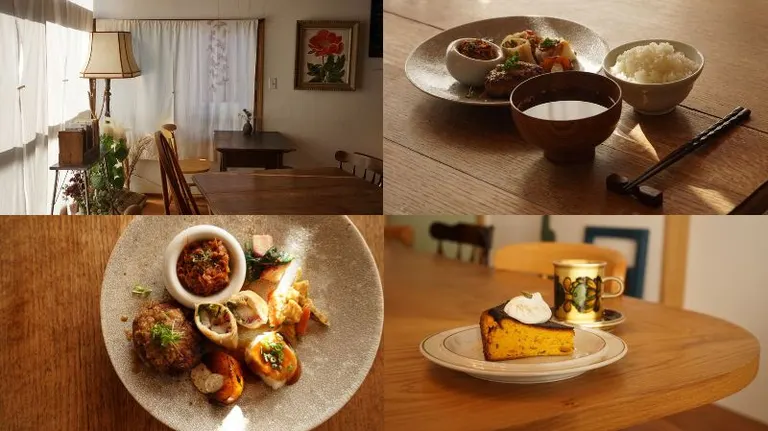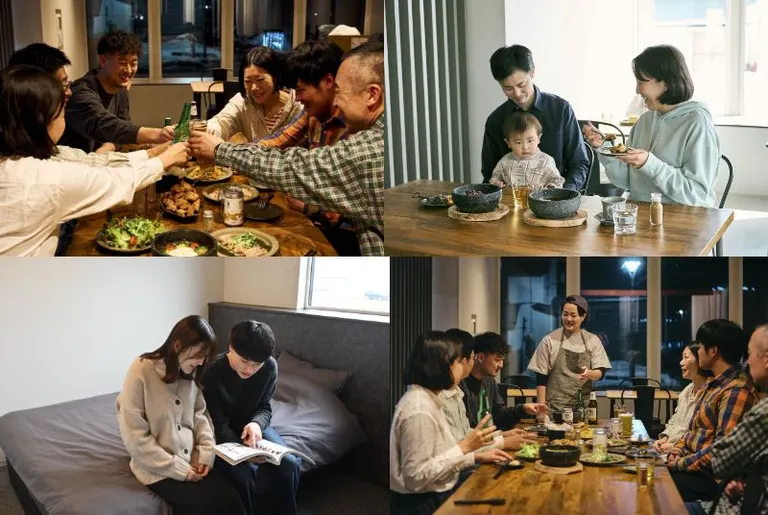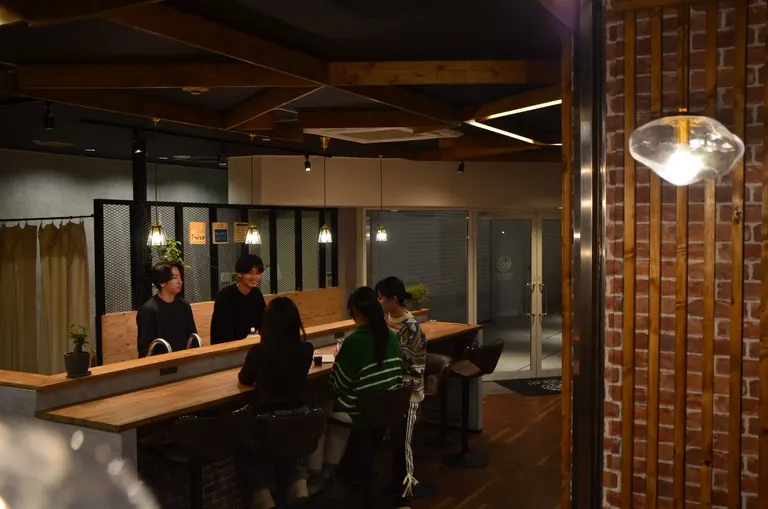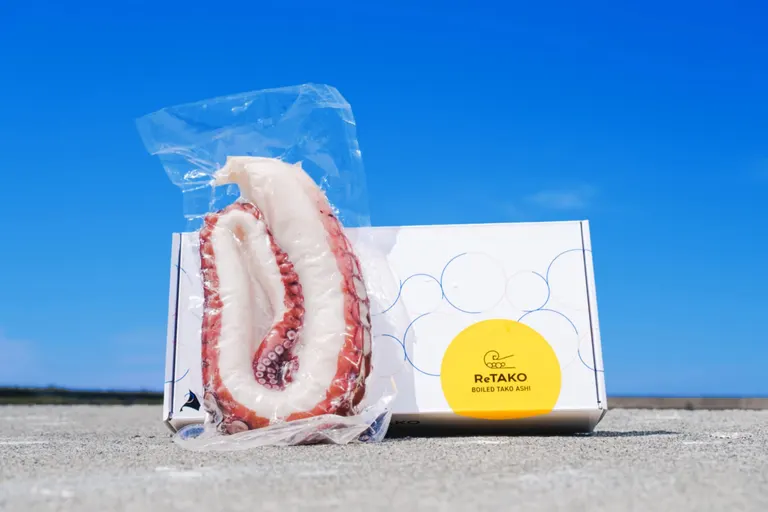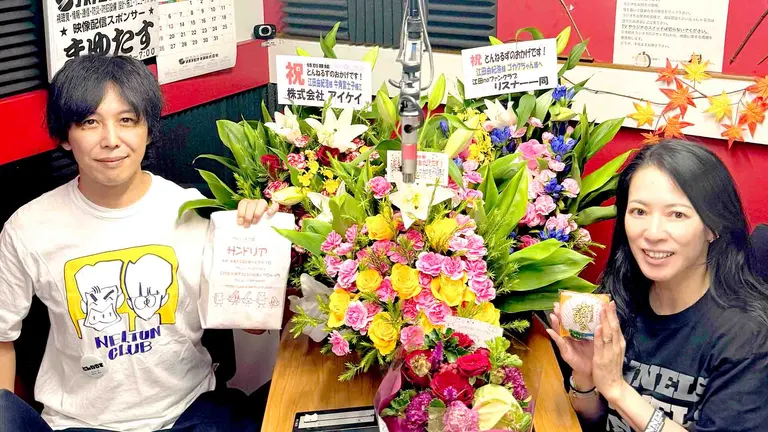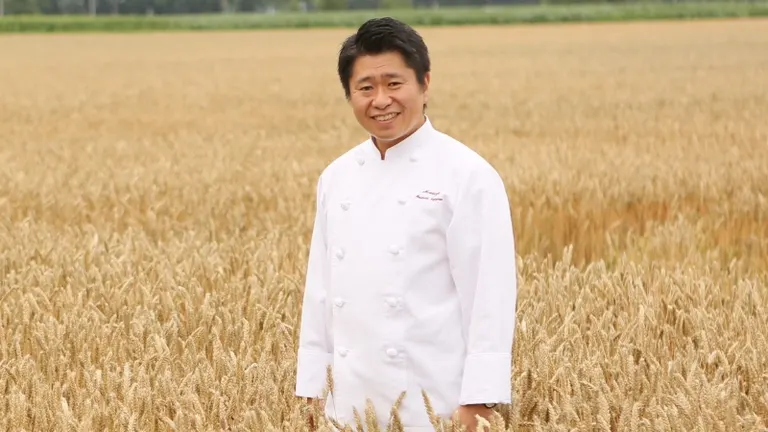
ARTICLES
We want to make everyone happy, both those who make the bread and those who eat it. Local food culture spun by bread made with 100% Tokachi wheat
Founded in 1950. Masuya Shoten, born in Tokachi, has been loved by local people for many years under the name of Masuya Bread. Masuya Bakery was the first in Japan to use "Haruyutaka" bread wheat produced in Tokachi, Hokkaido. Today, the company uses 100% Tokachi wheat.
Masanori Sugiyama, the fourth generation of the family, is the president of the company. At first, he had no intention of taking over the family business, but a strange fate led him to start his career as a baker.
I want to make as many people happy as possible by providing them with delicious bread. Not only that, I want people to know the charm of Tokachi through bread. With such big ambitions, Mr. Sugiyama continues to take on various challenges.
When I was a student, I had a part-time job at a bakery.
When I was a student, I wanted to become an aerospace engineer. So after graduating from high school, I went to a university in Kagoshima and studied aerospace industry.
At first, Mr. Sugiyama was trying to fulfill his dream in a field quite far removed from the world of bread. The gap between the two is surprising, but why did he turn his attention to bread in the middle of his career?
I left the dormitory and started living alone in an apartment, and started cooking for myself. I left the dormitory and started living alone in an apartment, and started cooking for myself. When I was looking for a part-time job, I found a bakery that was hiring. At the time, I wasn't looking for an apprenticeship; I just happened to get into the bakery as a part-time job.
It is an episode that feels very fateful. So when he graduated from college, "bakery" was one of his dreams for the future. However, he did not immediately return to the countryside to take over the family business.
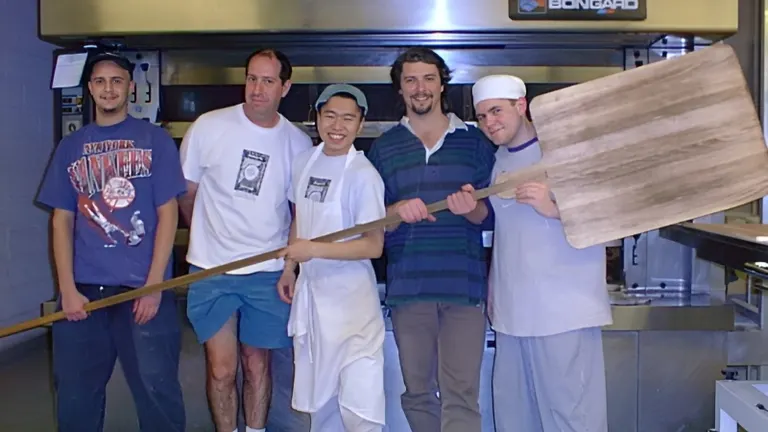
Mr. Sugiyama studying in the U.S. (third from the left in the photo)
At the time, most flour, the main ingredient of Japanese bread, was produced in North America. I wanted to see North American wheat and the bread industry first."
While learning English, Mr. Sugiyama attended the Baking Science Institute. It is a school for working people, where people working in the bakery industry not only in the U.S. but also around the world receive training. In Kansas, one of the largest wheat-growing states in the U.S., he learned the basics of baking science, practical skills in baking bread and pastries, and management of the baking industry.
That was in 1999. The U.S. is a multi-ethnic country, and the breads we have in our bakeries are not the same as those in Japan. Bagels, which originated from the Jewish food culture, and flat Middle Eastern kebab-like breads were still rare in Japan at that time. There was a wide variety of bread from all over the world in New York."
Thinking about food safety and food loss, he started a grocery store.
After returning to Japan, his mother suggested that he "join a large company and gain experience," and he joined a major flour mill company with which his parents had business dealings. She worked for two years as a new product development leader for convenience stores.
Convenience store bread inevitably uses a certain amount of additives because they are concerned about improving shelf life so that the bread does not get damaged. I was so busy at the time that I had a stomach ache, and that's when my interest in natural food grew. It was just around the year 2000 when the concept of slow food came to Japan from Italy."
In the midst of other news stories about food poisoning, mislabeling of production areas, and pesticide residues, Mr. Sugiyama began to think about how safe and secure food should be. He resigned from the flour mill company. However, he felt it was not yet the right time to return to his hometown, so he decided to start his own grocery store.
He would buy vegetables from the Kanto area and sell them to bakeries for use as ingredients in sandwiches and prepared bread, and would also receive bread that was unsold that day and distribute it to people living on the streets. What was uneaten was fed to pig farms, and what was damaged was taken to vegetable suppliers and used as compost by the producers, thus circulating the food. We didn't want to throw away the valuable food produced by the growers.
It is a system with no waste whatsoever, but the problem is that there is no profit to be made from it. After six months in business, Mr. Sugiyama finally gave up on the grocery business. At the time, he was between 25 and 26 years old. It must have been a valuable experience that would become the nourishment of his life," he says.
Achieving "100% Tokachi Wheat Use," inheriting the wishes of his predecessors
After quitting the grocery business, Mr. Sugiyama finally started selling bread at Masuya Shoten. At first, he began selling his bread not locally, but at department stores and kiosks in Tokyo as head of the Tokyo sales office. Since the bread was made from 100% Hokkaido wheat, which was rare at the time, it was well received by those who were interested in the product.
After selling bread in Tokyo for about a year, I got married and decided to return to Tokachi because I felt that I had done all I could do outside of my hometown. Before that, I traveled around Europe for 70 days, visiting 10 countries and observing the bread culture in each region.
In each region, bread was deeply rooted in the daily lives of the people as part of their food culture. After returning to Tokachi with firsthand experience of the inevitability of food, he joined his family business, Masuya Shoten, and began to think more deeply about the "utilization of Tokachi wheat," which his father, the previous owner, had set as a theme. That was in 2004.
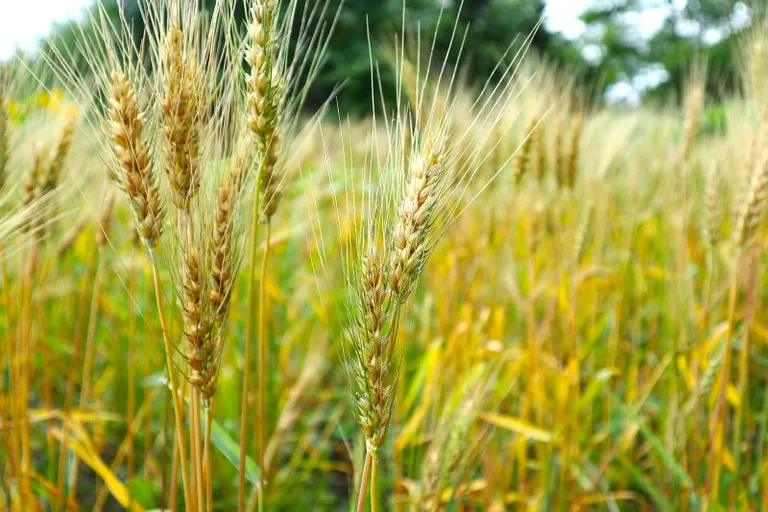
It had already been about 15 years since we had set forth the very significant theme of utilizing Tokachi wheat. It was also the time when bakeries were finally able to use Tokachi wheat little by little, as various things such as wheat breeding progressed. On the other hand, there was still a gap between agriculture and consumers, and local production for local consumption had not yet taken root. So, we decided to first spread the concept of local production for local consumption in the region through our bread.
One of the initiatives was to provide nutrition education. Mr. Sugiyama started activities to let local people know the value of wheat grown in the rich land of Tokachi. He had already offered baking classes at elementary schools, but in 2005, he built a mobile stone kiln in search of an easier way to make bread. By having children knead Tokachi flour to make and eat pizza, they have the valuable experience of "eating delicious wheat and cheese made in their own home town.
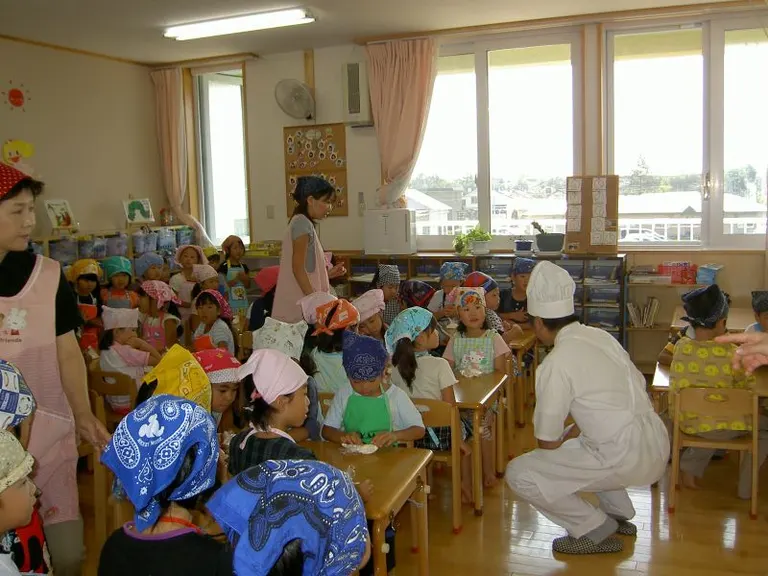
Sugiyama teaches a bread-making class at a nursery school
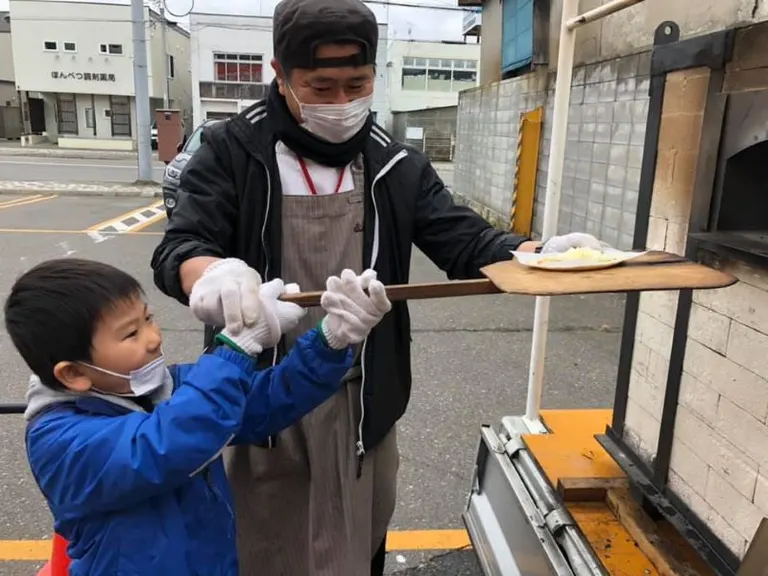
The fuel for the kiln is wood chips from Tokachi. Every inch of the pizza is made from Tokachi products.
In 2007, he took over the presidency from his mother, who was the third president. In 2012, the company achieved the goal of using 100% Tokachi wheat in all stores operated by Masuya Shoten. This was a major event that could be called a revolution. Since then, our efforts to realize our great ambition have continued.
- 1
- 2







